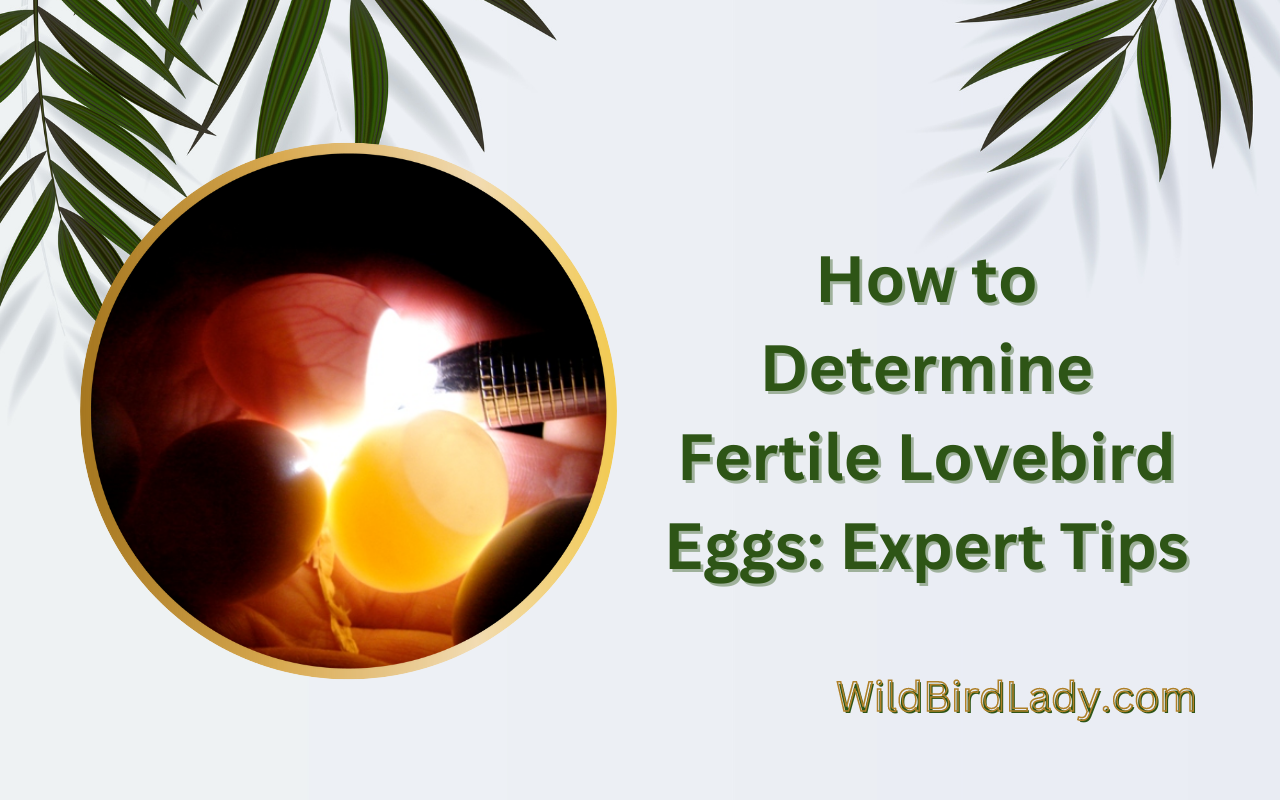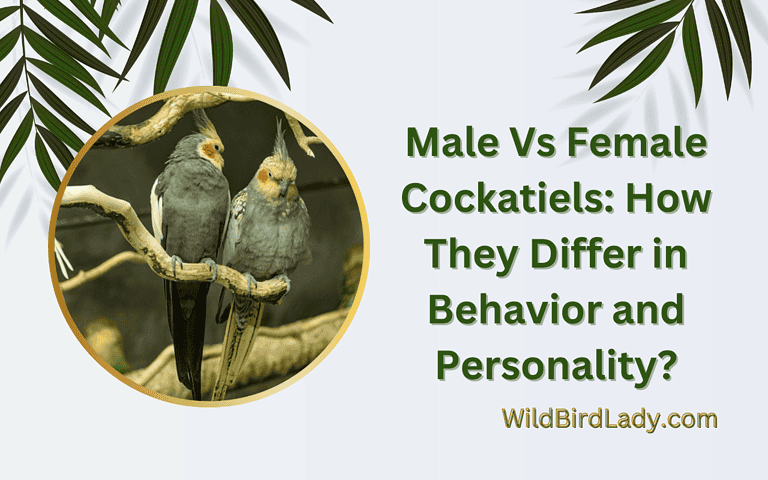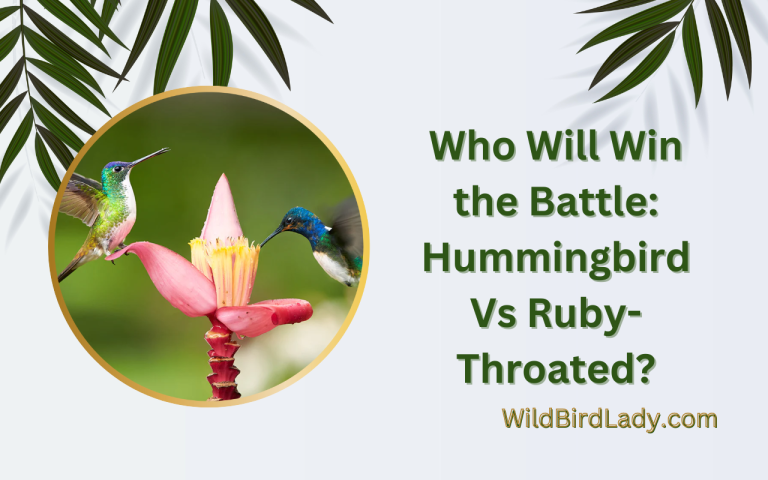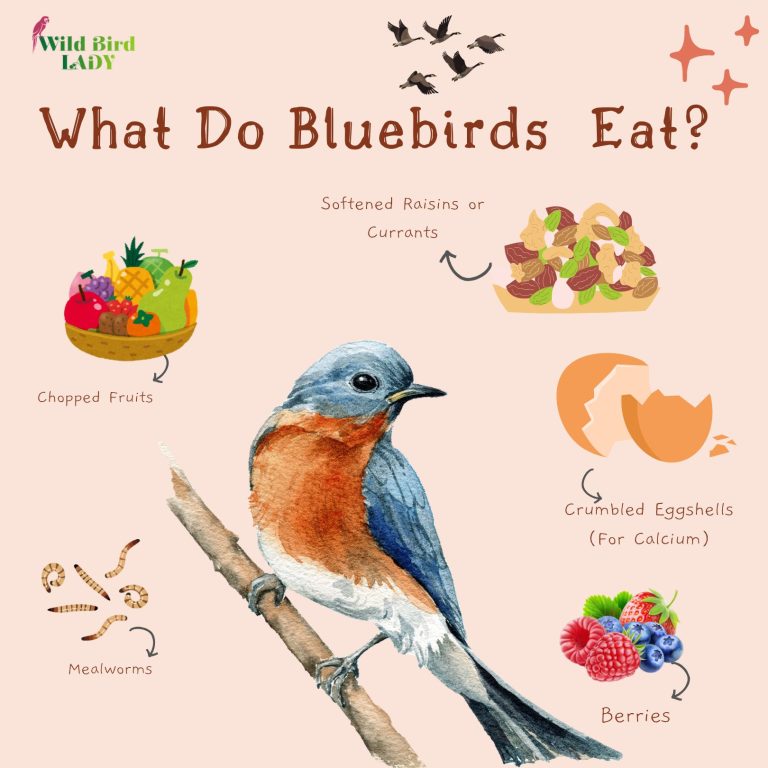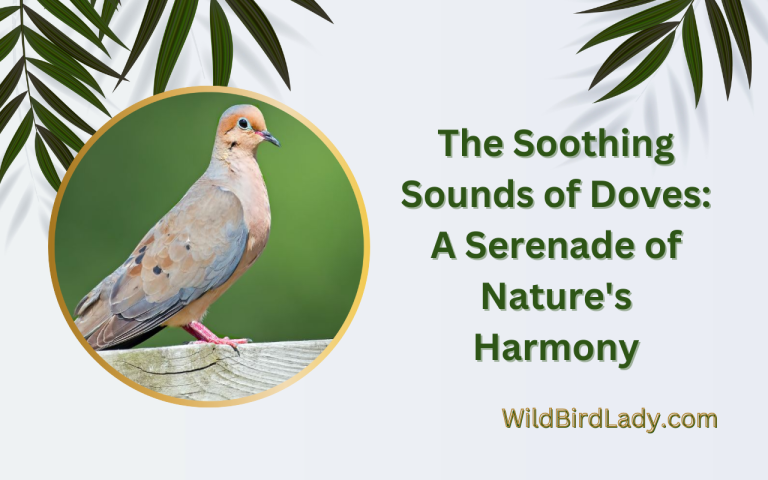How to Determine Fertile Lovebird Eggs: Expert Tips
To determine fertilization in lovebird eggs, you can candle the eggs using a bright light source. After 5-7 days of incubation, you should see a visible blood vessel network if the egg is fertile.
Lovebirds are small and colorful parrots popular for their playful personalities and affectionate behaviors towards their mates. These birds are monogamous and often mate for life. If you have a pair of lovebirds and they have laid eggs, you may be curious about whether the eggs are fertile or not.
Fertile eggs can hatch into adorable chicks while infertile eggs serve no purpose. It is crucial to determine which eggs are fertile, so you can provide appropriate care and incubation for the developing chicks. If you’re wondering how you can tell if lovebird eggs are fertile, don’t worry! In this article, we’ll go over the various ways you can identify whether the eggs are fertilized or not.
Understanding Lovebirds And Their Egg-Laying Process
Lovebirds are fascinating creatures to observe and study, particularly during their egg-laying process. By understanding their behaviour and biology, you can determine the fertility of their eggs with greater accuracy. In this post, we’ll walk you through the ins and outs of how lovebirds mate and lay eggs, as well as how to tell fertilized and unfertilized eggs apart.
Description Of Lovebirds And Their Mating Behavior
Lovebirds, also known as agapornids, are social birds that are commonly kept as pets due to their charming personalities and striking plumage. They are monogamous in nature, meaning they mate for life, and they often form close bonds with their partners.
Lovebirds engage in a variety of social behaviors, including preening, grooming, and feeding each other. They are also vocal birds that communicate with one another through a range of chirps, whistles, and other sounds.
During the mating season, which typically runs from october to february, lovebirds become even more affectionate towards their partners. They engage in courtship rituals that involve singing, dancing, and preening, while the male bird often feeds its mate. Once they have mated, the female will begin preparing a nest in which to lay her eggs.
Overview Of Lovebird Egg-Laying Process
Lovebirds lay eggs in batches, with each batch usually consisting of two to six eggs. The female bird will lay one egg every other day until the clutch is complete. The eggs are small and oval-shaped, measuring around one inch in length.
The female will incubate the eggs for approximately 23 days until they hatch, during which time the male will feed her and provide her with water. Once the chicks hatch, both parents will take turns feeding and caring for them until they are ready to leave the nest.
Explanation Of The Difference Between Fertilized And Unfertilized Eggs
When a female lovebird prepares to lay an egg, she will produce an ovum, or egg cell, in her ovary. If the ovum is fertilized by sperm from the male bird during mating, it will develop into a fertile egg that has the potential to hatch into a chick.
If the ovum is not fertilized, it will still be laid as an unfertilized egg, but it will not be capable of hatching.
Here are some key differences between fertilized and unfertilized eggs:
- Fertilized eggs will have a white spot called a blastodisc on the yolk, which will eventually develop into a chick. Unfertilized eggs will not have a blastodisc.
- Fertilized eggs will also have a thicker outer membrane than unfertilized eggs.
- To check if an egg is fertile, place it in a humid environment for a few days. If it begins to develop dark veins on the shell, it is likely a fertile egg.
By understanding the lovebird’s egg-laying process and the difference between fertile and unfertilized eggs, you can better care for your pet’s eggs and ensure that they are hatching healthy chicks. Remember to take all necessary precautions to protect your lovebird’s health and safety during the breeding process.
Signs Of Fertile Lovebird Eggs
Fertile lovebird eggs are vital for every bird breeder, but it can be tricky to determine which ones are fertile. However, there are a few signs you can look for to determine whether an egg is fertile. In this blog, we will explain in detail what fertile lovebird eggs should look like, how to identify the air chamber, blastoderm, and yolk in a fertile egg, and common signs that indicate a fertile egg.
Detailed Description Of What Fertile Lovebird Eggs Should Look Like
Fertile lovebird eggs are usually smooth, with a consistent color and shape. If the eggshell is porous, it may not be fertile. Additionally, the shell’s surface should not have any noticeable cracks or other irregularities. In general, fertile eggs tend to be slightly more substantial than infertile ones.
Explanation Of How To Identify The Air Chamber, Blastoderm, And Yolk In A Fertile Egg
- Air chamber: A fertile egg will have a small air chamber, which usually appears as a small white circle at the fat end of the egg. The air chamber is essential for the egg to develop, and you can determine its size by shining a bright light through the egg.
- Blastoderm: The blastoderm is a white ring that appears on the yolk’s surface. It is an essential sign of fertility and indicates that the egg is fertile, and the embryo is developing.
- Yolk: The yolk is located at the center of the egg and appears yellow. You can often observe the yolk rotating when you turn the egg.
Discussion Of Common Signs That Indicate A Fertile Egg, Such As Egg Shape And Shell Coloration
- Egg shape: Fertile lovebird eggs tend to have a more elongated shape than infertile ones and are more pointed at one end. They also have a more significant curve at the blunt end than infertile eggs.
- Shell coloration: Most lovebirds’ eggs have a white shell, but variations in color may occur. Fertile eggs tend to have a more consistent and slightly darker shell color than infertile ones. Additionally, if the shell feels softer or flexible, it may be infertile.
Remember, diagnosing fertile lovebird eggs might be somewhat tricky at first, but with time and practice, you will become accustomed to the subtle signs. Just make sure you have all of the necessary equipment and adopt a cautious, methodical approach when examining your lovebird’s eggs.
Techniques For Determining Fertile Lovebird Eggs
Overview Of Different Methods For Determining Whether An Egg Is Fertile
There are different ways to determine whether a lovebird egg is fertile. Here are some of the most effective methods:
- Candling technique
- Hygrometer technique
- Observation
- Egg floatation
Description Of Candling Technique And How To Use It To Determine Fertility
Candling is a method of shining a bright light on the egg to observe its contents. Here are the steps to follow:
- Hold the egg with the pointy end down.
- Shine a bright light on it. You can use a flashlight, a candling lamp or any other suitable light source.
- Observe the contents of the egg.
- The image of the inside of a fertile egg will show a dark shape which moves around easily as you turn the egg. This is usually referred to as the embryo. The rest of the egg will appear lighter in color.
If the egg is infertile, you won’t see any dark shape, and the contents will appear yellow or translucent.
To have accurate results with candling, make sure you do it in a dark room and away from any external light sources. It’s also advisable to candle your eggs frequently during incubation to monitor their progress.
Explanation Of How To Use A Hygrometer To Determine Humidity Levels In Incubation
A hygrometer is a device used to measure humidity levels. Maintaining consistent humidity levels is essential during incubation to ensure that your lovebird eggs hatch successfully. Here’s how to use a hygrometer:
- Place the hygrometer in the incubator.
- Wait for at least 30 minutes to allow the device to stabilize.
- Check the reading and adjust the humidity levels if needed.
The ideal humidity level for lovebird eggs is between 40-50% until day 18. From day 18 to hatching day, the humidity levels should range between 60-70%. Be mindful not to add too much water, as this can increase the chances of excess moisture in the incubator.
High humidity levels can result in poor hatch rates and chicks that are prone to bacterial infections.
Maintaining accurate humidity levels is crucial in ensuring that lovebird eggs develop and hatch successfully.
Determining fertile lovebird eggs entails proper observation, use of equipment and understanding of the incubation process. By utilizing the techniques discussed above, you’ll increase your chances of hatching healthy chicks.
Factors That Influence Egg Fertility
Lovebirds are wonderful pets known for their beauty and affectionate nature. They are also prolific breeders and can lay eggs quite frequently. But, before you get excited about the prospect of raising cute little lovebird chicks, it’s essential to ensure that the eggs are fertile.
Here are some expert tips to help you determine fertile lovebird eggs.
Discussion Of Environmental Factors That Can Affect Egg Fertility
Several environmental factors can influence the fertility of lovebird eggs. It is crucial to provide your birds with a suitable environment that meets their needs. Here are some elements that can affect egg fertility:
- Temperature: Lovebird eggs need to be kept within a specific temperature range to ensure their fertility. The ideal range is between 99 and 100 degrees fahrenheit. If the temperature falls below or rises above this range, the fertility of the eggs may be affected.
- Lighting: Lovebirds need adequate lighting to lay fertile eggs. Ensure that their living area receives enough natural light or provide an artificial light source. The light should be on for no less than 12 hours and no more than 16 hours daily.
- Cleanliness: A dirty or unsanitary environment can lead to bacterial or fungal infections, which can cause infertility and low hatching rates for lovebird eggs. Keep their living space clean and dry.
- Stress: Lovebirds are prone to stress, which can cause infertility. Keep loud noises, and other potential stressors, away from their environment as much as possible.
Explanation Of Nutrition And Diet Requirements For Lovebirds During The Egg-Laying Process
Nutrition and diet play a vital role during the egg-laying process. It’s crucial to feed your lovebirds with a well-balanced diet to increase the chances of fertile eggs. Here are some essential nutrients your lovebirds need:
- Calcium: Lovebirds need adequate calcium to produce healthy eggshells. Provide them with cuttlebones, eggshells, or mineral blocks.
- Protein: Feed your lovebirds with high-quality protein sources such as boiled eggs, cooked chicken, and mealworms to support healthy egg production.
- Fresh fruits and vegetables: Lovebirds need fresh fruits and vegetables to supplement their diet and provide essential nutrients that help with egg-laying.
Overview Of Common Diseases And Infections That Can Decrease Fertility
Several infections and diseases can decrease fertility and hatching rates in lovebird eggs. Here are the most common ones:
- Bacterial infections: Bacterial infections such as salmonella, e.coli, and streptococcus, can cause infertility and lower hatching rates. Keep their living area clean and dry to prevent bacterial growth.
- Fungal infections: Fungal infections such as aspergillosis, candidiasis, and mycosis can lead to infertility and poor hatching rates. Maintain proper hygiene in their environment to reduce the risk of fungal infections.
- Parasites: External parasites such as mites and lice can suck blood from lovebirds, reducing their ability to produce fertile eggs. Ensure their living space is clean.
Determining fertile lovebird eggs requires careful attention to several factors such as the environment, nutrition, and disease prevention. If you do everything right, your lovebirds will lay healthy, fertile eggs that hatch into beautiful chicks that will delight you with their joyful chirping and playful antics.
Frequently Asked Questions For How Can You Tell If Lovebird Eggs Are Fertile?
How Long Does It Take For Lovebird Eggs To Hatch?
Lovebird eggs usually take around 23 to 30 days to hatch.
How Many Eggs Do Lovebirds Lay?
Lovebirds typically lay 4 to 6 eggs per clutch, with each egg laid every other day.
How Do You Know If Lovebird Eggs Are Fertile?
To know if lovebird eggs are fertile, observe if there are growing embryos, blood vessels, or movement within the egg. You can do this by candling the egg using a flashlight.
Can You Incubate Lovebird Eggs Without A Nest?
Yes, you can incubate lovebird eggs without a nest. You can use an incubator to artificially simulate the ideal temperature and humidity needed for hatching.
Why Do Some Lovebird Eggs Not Hatch?
There are various reasons why some lovebird eggs may not hatch, including infertile eggs, improperly incubated eggs, or genetic defects. It’s essential to diagnose the problem appropriately before attempting to correct the situation.
Conclusion
Now that you’ve learned how to tell if lovebird eggs are fertile, you can confidently breed your lovebirds without worrying about whether or not your eggs will hatch. Remember to consistently check your eggs for any signs of fertility and development, and keep in mind the potential reasons why an egg may not be fertile.
If you do encounter an infertile egg, remove it from the nest to prevent any bacteria from forming and potentially harming the other eggs. With the right care and attention, you can successfully breed your lovebirds and raise a healthy and happy family of birds.
So go ahead and let nature take its course, and enjoy watching your lovebirds grow and thrive as a new generation arises.

